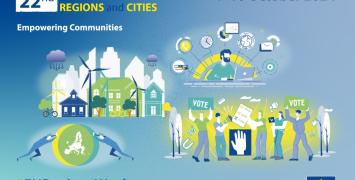Think globally, invest locally
Cities and regions around the world are increasingly inter-connected. One clear factor for this connectivity is foreign investment: the flow of capital, skills and knowledge that can – under the right circumstances - "bless" an area, improving its economic and social standing. ERC grantee Riccardo Crescenzi studies where these flows are concentrated, how different actors choose where to invest and what are their impacts on both the home and host economies.

The flip side to global connectivity is that some areas are left behind, with investment distribution patterns and impacts proving particularly unequal. Left behind places can become disenfranchised and offer breeding grounds for political disintegration. These areas often try everything in their power to attract foreign investors: tax breaks, improved infrastructure and different employment regulations, all to better suit their potential partners. The success of these strategies is arguable.
Watching this video you are accepting Youtube cookies policy
How do we understand this web of connectivity? Prof. Crescenzi operates at city level. Thousands of cases, in fact, have shown that companies are more interested in what cities can offer them, rather than national governments. What different firms look for in an area changes, but this is the key to understanding why some places attract large levels of investment and others are left untouched.
Watching this video you are accepting Youtube cookies policy
Governments often have tricks up their sleeves to attract multinationals to their countries. But which ones actually work? This is a question that is surprisingly difficult to answer. The team has been studying two types of ways municipalities can attract foreign investment – Investment Promotion Agencies and targeted subsidies.
Investment Promotion Agencies exist everywhere, running campaigns, seeking investors and lobbying to attract money to a certain area. The researchers have built the first ever census of these firms and analysed their success. Targeted subsidies are offered by governments to increase cooperation between foreign firms and local firms. They are considered the most useful way of driving development and know-how into a certain area. But is this reputation well-founded?
Watching this video you are accepting Youtube cookies policy
The team has gone beyond anecdotal evidence, studying a large number of cases and showing that, while, under the right conditions, foreign investment generates positive economic impacts, there tend to be four common misconceptions (what the video) about how to attract local investment to an area, and who will actually benefit from this investment. It is more important than ever that policymakers take an empirical, data-driven approach to these issues in order to successfully balance the opportunities offered by the evolving globalisation of innovation with inclusive growth and local wealth.
Watching this video you are accepting Youtube cookies policy
Follow Prof. Crescenzi and his team as they work through some of the most common misconceptions about foreign investment. The ERC project, MASSIVE, aims to study how places can learn to benefit from connectivity and improve their chances of attracting and securing investment flows. They have crunched big data and collaborated with governments and public administrations worldwide such as the European Commission, the OECD and Investment Promotion Agencies in virtually all European countries and 88 regions, to understand what factors determine the success of an area, and what public policy can do to help.






